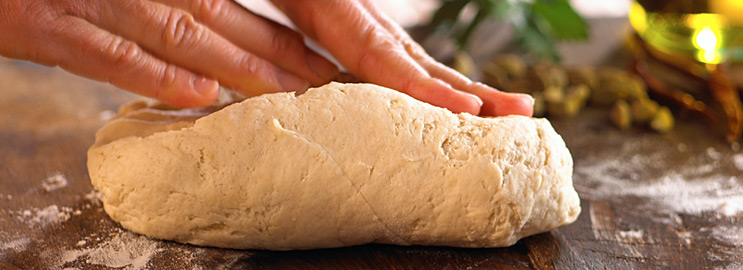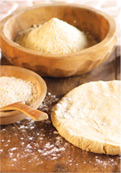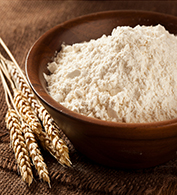
Flour Storage Basics

- Most types of flour keep well in a sealed container in a cool, dry and dark location. Note that contact with sunlight can cause flour to spoil. The original paper packaging used for many types of flour is fine for long-term storage as long as the package has not been opened. Once open, the shelf life decreases.
- Many cooks prefer to put flour in food-grade re-sealable plastic bags or food-grade plastic containers with airtight lids. If the flour bag is packaged in paper, you can put the whole bag inside a food grade plastic bag or food grade plastic container.
- Avoid refrigerating or freezing flour in its original paper packaging because paper is porous and the flour may absorb moisture and odours.

Storing in the Refrigerator
- The refrigerator is a very good storage area for flour, but the use of a sealed, airtight container is important to prevent the flour from absorbing moisture as well as odours and flavours from other foods stored in the refrigerator.
Storing in the Freezer
- Most types of flour can be tightly wrapped for freezer storage, but wrapping is often an awkward method for storing large quantities.
- Wrap the flour tightly in plastic followed by a layer of aluminum foil. If the flour has not been opened, the paper package can be stored in the freezer if the package is tightly wrapped with plastic.
- Flour can also be frozen in airtight containers or re-sealable bags. When using sealed containers or freezer bags, make sure they are full to eliminate as much air as possible.
- Whole-grain flours in particular should be stored in the freezer—the ground germ contains oil, which can grow rancid if stored at room temperature.
- Note—Flour may dry out with long storage, and may lose its baking qualities, so you may want to label and date your flour for freshness when storing in the freezer.
TIP! When using flour from the fridge or freezer, let it warm up to room temperature before using.
Storing Flour in the Pantry

- Many flours can be stored in your pantry in an airtight container—a cool, dry, dark cabinet is best.
- The original paper packaging is fine for long-term cabinet storage as long as the package has not been opened.
- Most types of flour keep longer if stored in a sealed plastic or glass container.
Consider This For Best Results
Flour absorbs moisture during high humidity; it loses moisture in high altitude, cold weather or during long storage. Why is this important? The amount of moisture in flour will affect the results of your dish! Moisture in the flour can change quickly, so if the amount of flour to use is listed as a range, begin with the least amount and add additional flour as needed.
Shelf Life and Freshness
Proper preparation and storage of flour will help your flour last. Storage conditions will affect the freshness of your flour. However, generally:
- Recommended shelf life for other Golden Temple® flour is 12-15 months from date of production.
- Whole wheat flour has a much higher spoilage rate due to oil in the wheat germ. Keep whole wheat flour in a tightly sealed container in the refrigerator or freezer. All flours will keep longer when stored in the freezer.
Whole wheat flour, in particular, is subject to rancidity. When whole wheat flour is rancid it smells old or stale, or has an “off,” sour taste.
TIP! It is best to buy smaller quantities of flour if you are finding it necessary to continually discard the flour due to spoilage.
TIP! Never use flour that doesn’t look or smell good!
